What is Design Thinking?
Design thinking is a systematic approach to complex problem-solving in various application fields that focuses on people, in contrast to many other scientific methodologies that serve similar purposes. The needs and desires of users are at the centre of the design thinking process.
The method is named after the work of designers, who base their work on observations and a high level of user-centeredness. Design thinking was first applied at Stanford University in the United States, and the founders of this innovation were Stanford professors Larry Leifer and David Kelley, as well as computer scientist Terry Winograd.
The process requires regular feedback between developers of a solution and the relevant target group. To develop solutions, it is necessary to ask the target group, often the customers, specific questions and identify individual processes and behavioural patterns. Design thinking creates practical results by communicating solutions and ideas as early as possible in the process using prototypes. This way, potential customers have a chance to test products and provide feedback before they are introduced to the market.
What are multidisciplinary teams?
To create innovations and develop answers to complex questions, it is advantageous to form multidisciplinary teams consisting of five to six people. A curious and open approach is fundamental in the design thinking process.
The small group ensures that every individual perspective is taken into account during the work process. The goals of such heterogeneous teams are concrete solutions and tangible results.
Frequently asked questions and answers
The design thinking process, adapted to the classic intuitive work process of a designer, guides heterogeneous teams consisting of five to six people through six phases in iterative (step-by-step) loops.
Understanding – Phase 1
In the first step, the problem must be defined, and it must be ensured that all participants have a consolidated understanding of the initial situation. The goal of the first phase is not only to define the problem clearly, but also to measure the solution space. The entire process can only be executed if a foundation with a shared understanding of the problem is established in the first phase.
Observation – Phase 2
In the second phase, companies must actively and directly engage with their customers. Needs and desires must be filtered out and understood. In this step, it is particularly important to build empathy for users and those affected in practice.
Define Position – Phase 3
Based on the observations gathered from the first two phases, a conceptual framework defining a specific customer group must be developed in Phase three. All ideas and insights gained are brought together.
Find Ideas – Phase 4
In the fourth step, the team develops ideas that can solve the problem of the already defined target group. Initially, a wide variety of different solution options are collected and examined to then focus on a final solution.
Develop Prototypes – Phase 5
In this phase manual skills and creativity are required. Prototypes are developed that allow customers to provide real feedback, bringing the solution one tangible step closer.
Testing – Phase 6
In the final phase of the design thinking method, the team must try out, test, and see what feedback customers provide. The developed prototypes have the task of making abstract concepts tangible for users and end consumers. Depending on the feedback, a solution can be found at this point, or it may be necessary to repeat the phases of the design thinking process.
In the individual phases of the design thinking process, there are many different methods that can be applied by the team. One frequently used method that many companies use is the so-called What-How-Why method, which records what the target group does, how they do it, and why.
In addition, the design thinking approach often involves conducting interviews with users in which targeted first-hand information can be obtained. Based on such interviews, personas of target groups can then be created, for example.
Sources
- An Introduction to Design Thinking PROCESS GUIDE. Hasso Plattner Institute of Design at Stanford University, USA.
https://web.stanford.edu/~mshanks/MichaelShanks/files/509554.pdf
- Was ist Design Thinking? Hasso-Plattner-Institut für Digital Engineering gGmbH, Potsdam.
https://hpi.de/school-of-design-thinking/design-thinking/was-ist-design-thinking.html
- Design Thinking – Mit Methode komplexe Aufgaben lösen und neue Ideen entwickeln. Digitale Neuordnung (#DNO). AD GmbH, Köln. https://digitaleneuordnung.de/blog/design-thinking-methode

